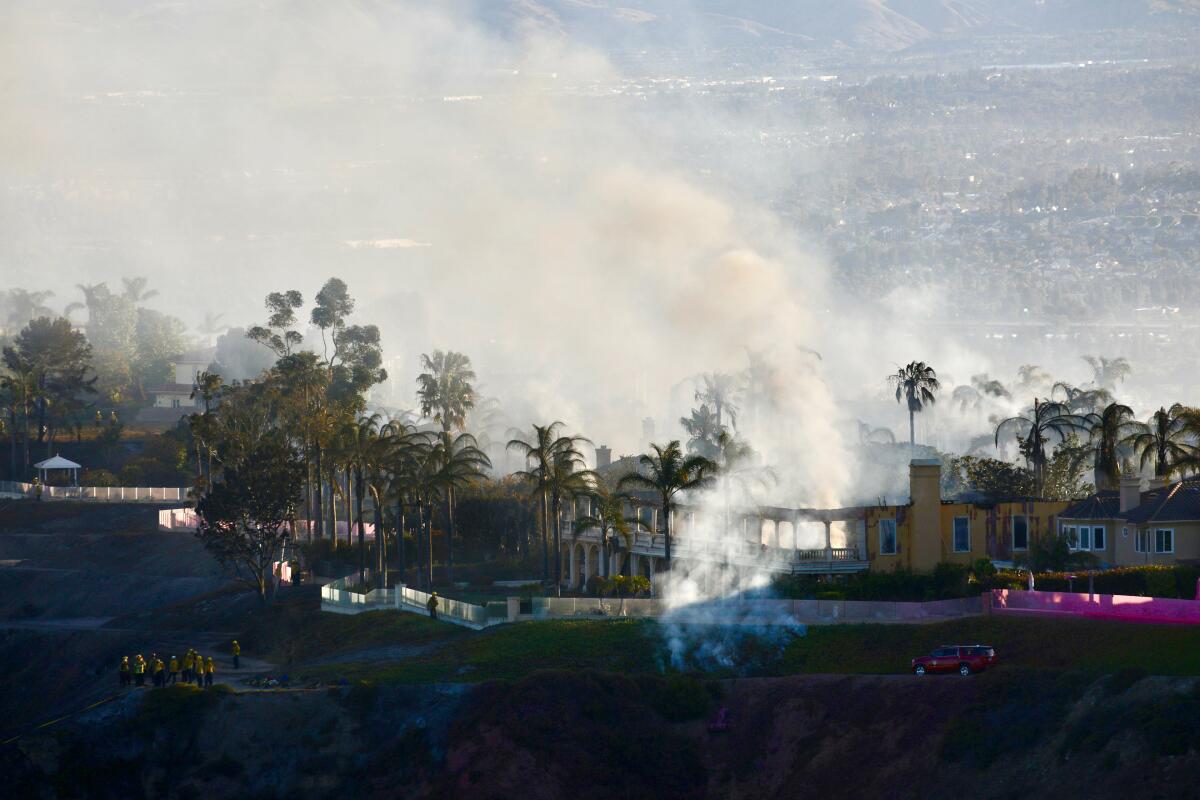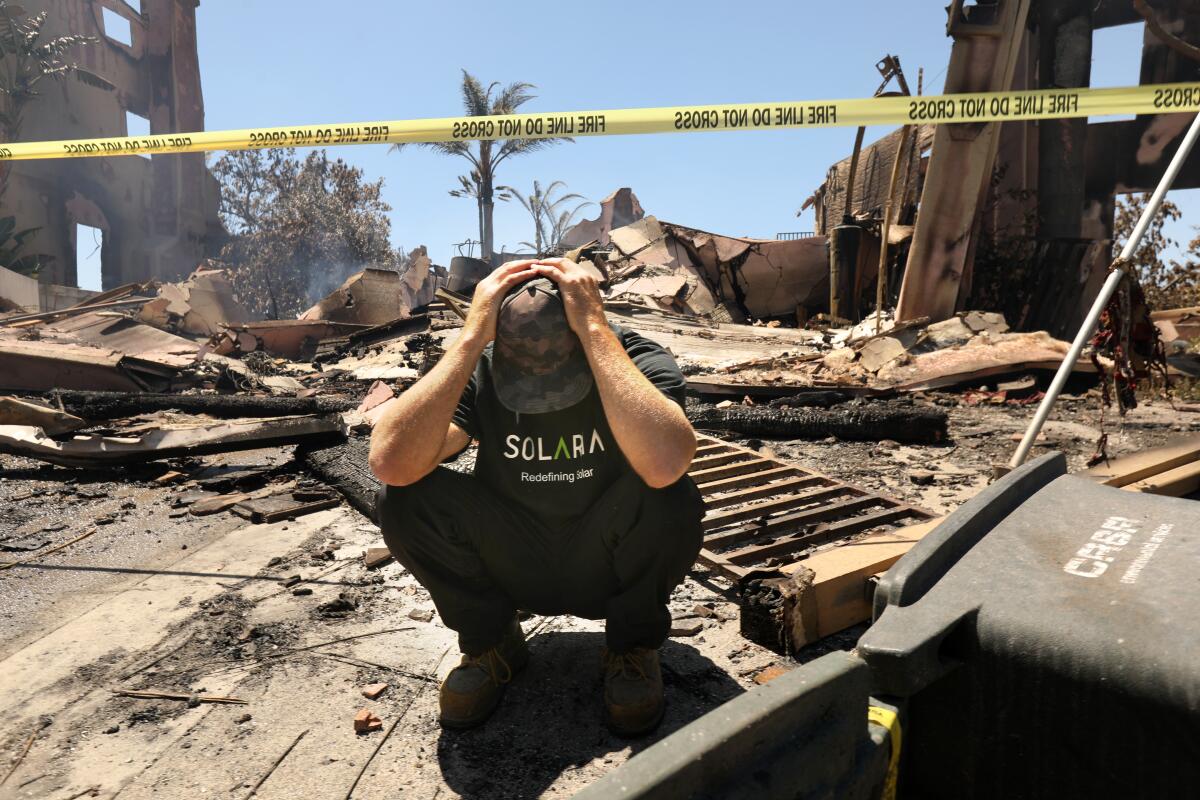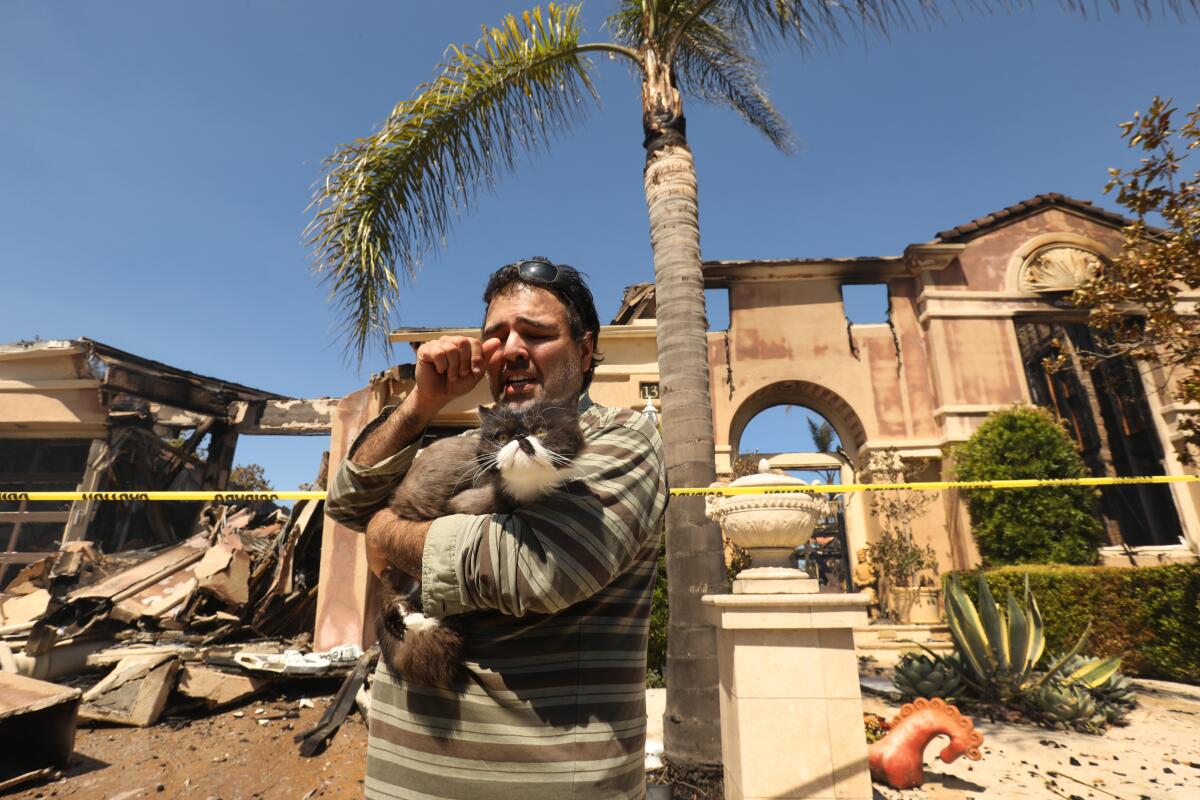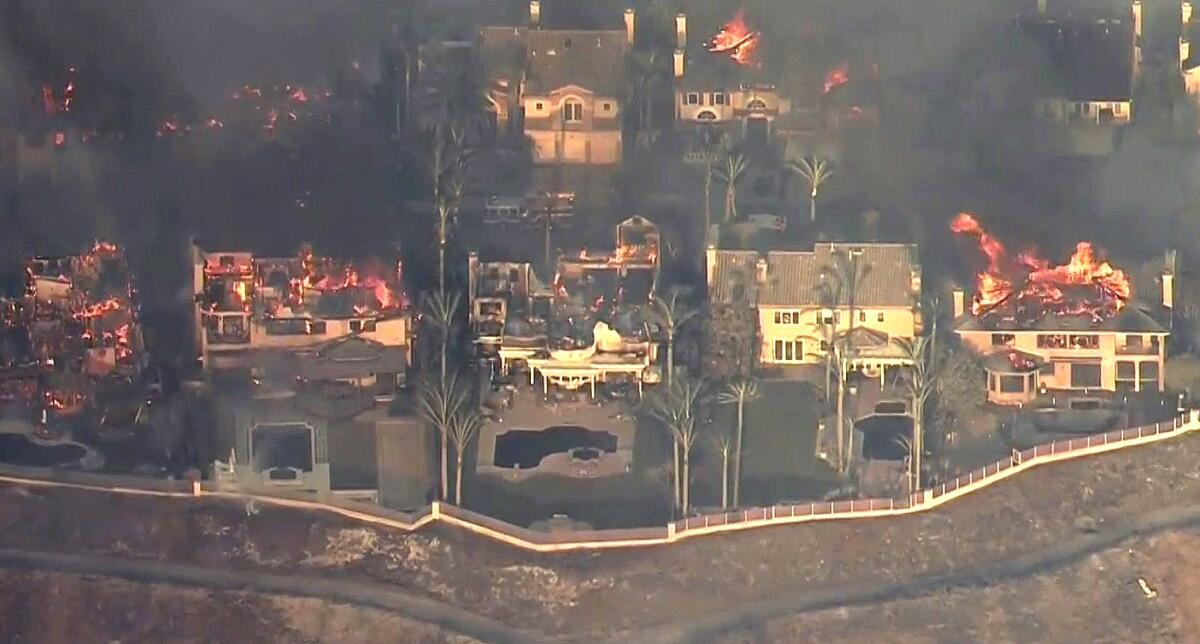A charred Porsche, smoldering mansions: An ocean-view street in Laguna Niguel lost to fire

Houses in Laguna Niguel smoldered on Thursday.
The Coastal fire in Laguna Niguel sent hundreds fleeing their homes, but the toll was most devastating on one block.
At the crest of a canyon overlooking the Pacific Ocean, fire raced up and burned big home after big home in the upscale Coronado Pointe subdivision. Wind-blown embers lodged into attic spaces and roofing material and set the homes on fire from within.
Here is what we know:
Damage
The fire destroyed 20 homes and damaged 11, said Shane Sherwood, incident commander with the Orange County Fire Authority. An assessment team is still combing through the burn area to ascertain the full extent of the damage.
On Friday morning, crews continued to mop up hotspots and clear debris around some of the damaged homes. Several had been red tagged and roped off. Fire officials are concerned the facades still standing may collapse.
Most of the homes lost were on Coronado Pointe, a street facing the canyon where the fire burned. The street has ocean views, and many of the homes are worth millions of dollars. A few other houses were lost on streets farther into the subdivision.

Grim scene
The scene on the street was grim. Families walked through the neighborhood in horror to see if their homes were still standing.
The fire was so intense that it blackened the palm tree leaves that hung above several of the destroyed houses. Many of the facades were still intact — an indication that they had burned from the inside out. Shutters that once framed windows overlooking the wide street were charred.
A Porsche that had been left in the driveway outside one house was burned so badly it was nearly unrecognizable. Water ran down the street as firefighters sprayed the still smoldering houses.
The glass fences of the houses with backyards facing the canyon were coated in pink fire retardant. Ash and debris turned the water in backyard pools overlooking the charred hillside muddy brown.
Sandy Vogel stood outside the remnants of her home of three decades holding a wood birdhouse that her son had just plucked off a tree. The 20-year-old miniature aviary was one of the few items she has left from her home.
“It’s 30 years’ worth of memories,” she said, her voice catching. “We’ll rebuild and we’ll see if we want to stay here. Maybe it’ll be too hard.”

Origins
The blaze was first reported as a 50-by-50-foot spot near a water treatment plant Wednesday afternoon and quickly grew out of control.
The fire’s cause is still under investigation.
Southern California Edison issued an initial report to state regulators saying that “our information reflects circuit activity occurring close in time to the reported time of the fire.”
David Song, a spokesman for the utility, said Edison’s report — which is required for certain types of events — is intended to put the California Public Utilities Commission “on notice of an incident, so that it can conduct its own investigation.”

Path
Experts say that preliminary reports suggest the devastation was due to an unlucky combination of factors. Moderate winds, steep terrain and drought-ravaged vegetation worked together to drive flames into a community where homes had been constructed before fire-hardening building codes took effect.
The fire torched dry grasses and shrubs. The wind-driven flames continued west, and radiative heat and flames naturally reached higher and higher, swiftly racing up to homes perched on the hilltop.
On hillsides, fire creates a chimney effect as a column of hot gases, smoke, ash and debris rises, potentially overriding the ambient wind direction and creating a draft that pulls in oxygen. Features such as gullies, ravines or chutes concentrate this hot, rising air, called a convective column. The hot gases preheat fuels ahead of the fire as the blaze roars up a slope. Hot embers can be carried by this rising air and the wind, touching off smaller fires ahead of or behind the main blaze.
The latest
Firefighters on Friday increased containment of the Coastal fire.
- The fire is now 25% contained.
- Hundreds of residents remain evacuated. Some have returned to their homes, but authorities said Friday they are still trying to determine when more can return.
- A total of 200 acres have burned.
- More than 500 firefighters remain on the scene.
More to Read
Sign up for Essential California
The most important California stories and recommendations in your inbox every morning.
You may occasionally receive promotional content from the Los Angeles Times.











